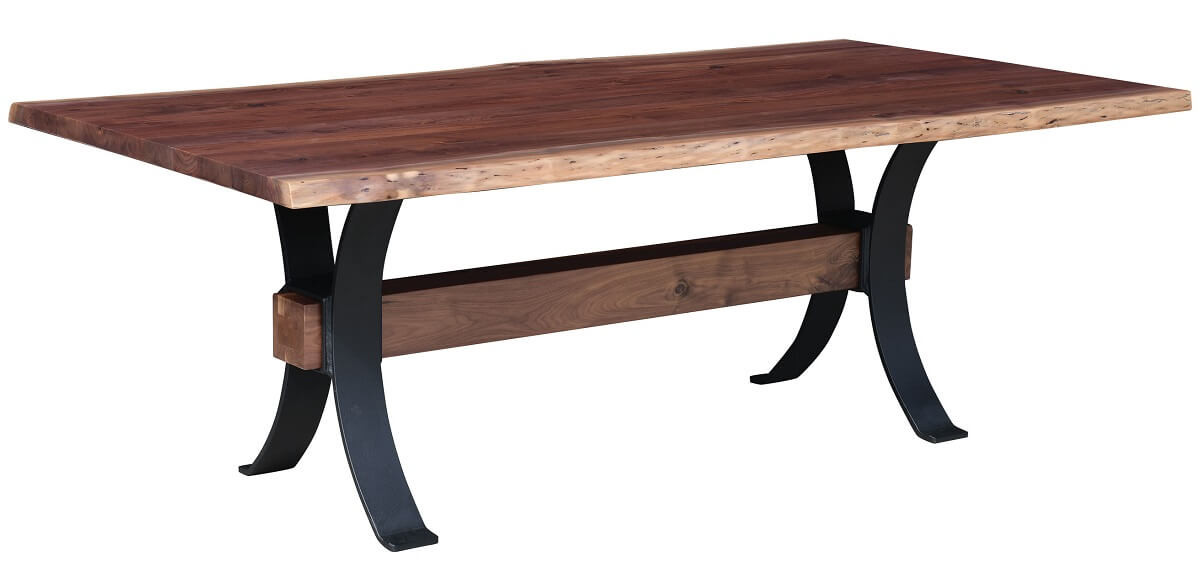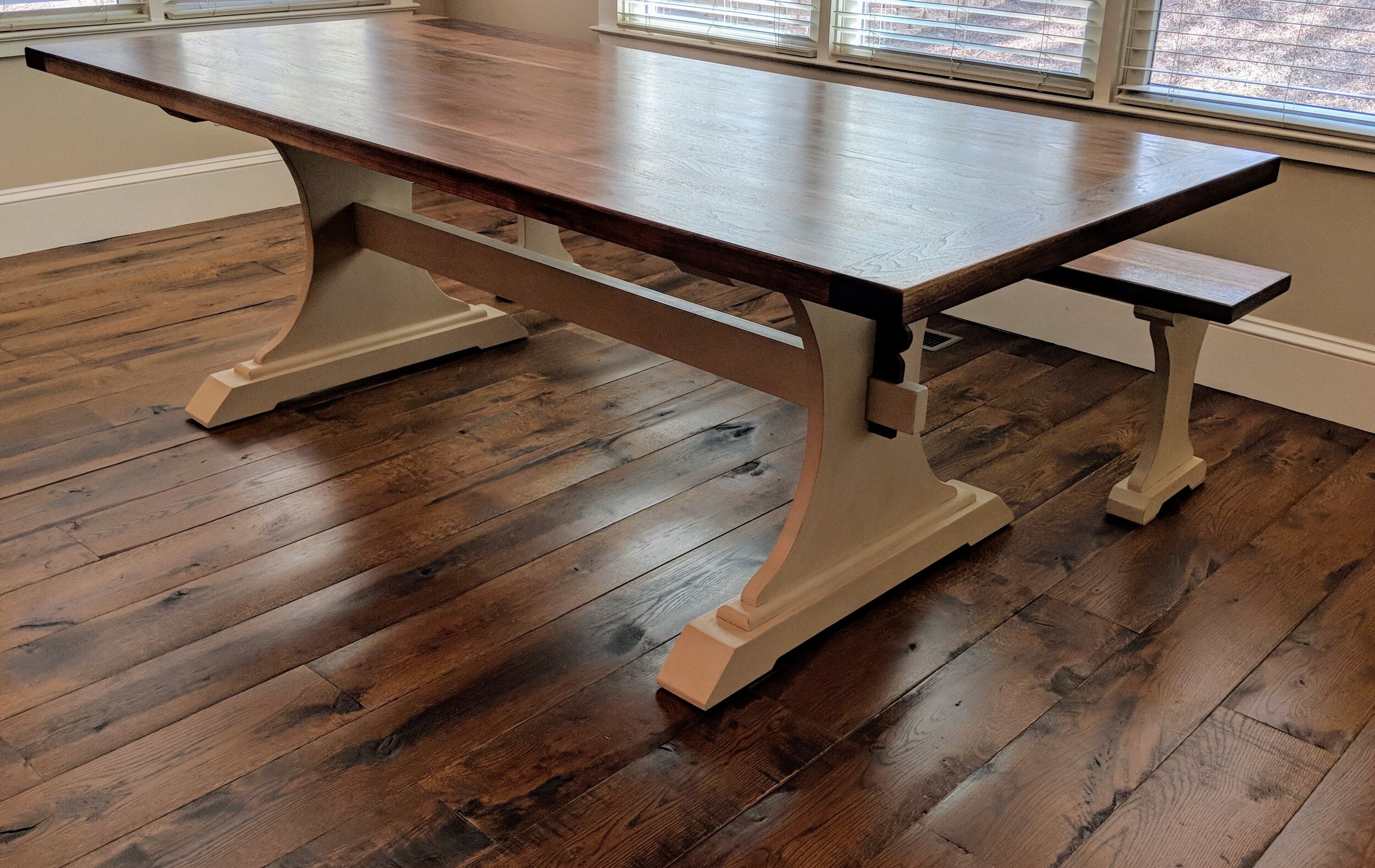Why Dining Room Table Legs Are Crucial for Your Table’s Stability
Why Dining Room Table Legs Are Crucial for Your Table’s Stability
Blog Article
From Conventional to Modern: Locate the Perfect Eating Area Table Legs for Your Design
The choice of dining space table legs plays a crucial role in defining the general character of your area, linking the gap between traditional craftsmanship and contemporary aesthetics. While traditional designs such as cabriole and transformed legs evoke a feeling of timeless elegance, modern designs like hairpin and geometric choices present an opportunity for striking visual interest. Reviewing the ideal balance in between these styles calls for a nuanced understanding of your existing décor and individual taste. As you consider these components, the question stays: how can you perfectly incorporate these diverse leg designs to develop a harmonious dining experience?
Recognizing Table Leg Styles
The variety of dining room table leg styles can considerably influence both the aesthetic appeals and functionality of the room. Each leg design adds unique visual elements and practical functions, providing to varied design preferences and usage requirements. Understanding these styles is critical for picking the appropriate table that lines up with your general interior design vision.
For instance, conical legs supply a tidy, classic look that can boost an area's sophistication, while pedestal bases supply security and maximize legroom, making them ideal for smaller sized areas. Barrette legs, a characteristic of mid-century contemporary design, present a commercial panache, permitting for a ventilated, open feel. Trestle legs stimulate rustic appeal, offering durable support and a feeling of timelessness.
Additionally, the choice of products plays a considerable duty. Wood legs can bring heat and structure, whereas metal choices frequently share a sleek, modern vibe. Inevitably, understanding table leg designs is essential for developing a cohesive eating area that shows individual design while ensuring practicality and comfort. By thoughtfully taking into consideration these aspects, you can improve both the visual and useful appeal of your eating room.
Traditional Table Leg Options
When selecting dining area table legs, traditional choices commonly embody ageless style and workmanship. These designs show a rich heritage and a dedication to top quality, making them perfect for those who appreciate timeless visual appeals.
One of the most famous typical leg designs is the cabriole leg, defined by its stylish rounded shape. This style typically includes attractive makings and is most generally located in Queen Anne and Chippendale furnishings. An additional popular option is the transformed leg, which flaunts a series of smooth, rounded shapes that offer a traditional look while maintaining security.
Furthermore, the straight leg, while straightforward, uses a basic and strong structure that can blend effortlessly with a variety of tabletop styles. For those attracted to ornate describing, claw-and-ball feet legs stimulate a sense of grandeur and can function as a spectacular centerpiece in any eating area.
Last but not least, stand bases, although not strictly legs, offer an alternative conventional choice that enables sufficient legroom and can be wonderfully sculpted. Each of these standard leg styles contributes to the total atmosphere of a dining-room, marrying feature with aesthetic appeal.

Modern Table Leg Designs
Modern table leg layouts provide a varied variety of designs that emphasize ingenious materials and tidy lines. These styles frequently focus on performance while functioning as striking prime focus within an eating room. Minimal looks are widespread, with legs crafted from materials such as steel, glass, and engineered timber, which add to a contemporary and airy feeling.
One popular style is the hairpin leg, identified by its slender, conical framework that offers stability without frustrating the table top (dining room table legs). This style is often discovered in mid-century contemporary furniture and can easily match numerous table shapes. An additional pattern is using geometric shapes, where legs may tackle asymmetrical or angular types, including aesthetic interest and a touch of creativity

Mixing Styles for One-of-a-kind Rooms
Usually, home owners look for to develop one-of-a-kind eating rooms that mirror their personal style by blending numerous design components. This strategy enables the consolidation of diverse looks, leading to an unified yet distinctive have a peek here environment. Combining a rustic wood table with streamlined, modern steel legs can produce an appealing contrast that boosts the space's total allure.
Furthermore, integrating vintage table legs with modern tabletops can stimulate a feeling of background while preserving a modern perceptiveness. Such combinations not just display private preference however also motivate creativity, allowing house owners to curate a space that really feels both personal and welcoming.
Color plays an important role in this mixing procedure; choosing table legs that match or contrast with the existing color plan can improve visual passion. Whitewashed legs can soften the daring of a dark table surface, producing a well balanced aesthetic.
Tips for Picking the Right Legs
Selecting linked here the right table legs is necessary for achieving both performance and aesthetic allure in your dining area. Begin by thinking about the total style of your space. Typical settings take advantage of legs that include intricate carvings or transformed designs, while contemporary rooms might call for smooth, minimal designs.
Next, evaluate the elevation and security of the legs. dining room table legs. Standard table range in between 28 to 30 inches in elevation, so ensure the legs complement this measurement for convenience. Additionally, robust materials, such as hardwood or steel, can boost stability and durability
Examine the leg form too-- options include directly, tapered, or stand layouts. Straight legs supply a timeless look, while tapered legs can include a touch of style. Pedestal bases provide sufficient legroom and are suitable for smaller sized areas.
Final Thought
In recap, picking the ideal dining-room table legs calls for mindful consideration of both contemporary and standard styles. Conventional choices such as cabriole and turned legs provide timeless beauty, while modern designs like hairpin and geometric forms supply a contemporary touch. By harmonizing leg style, elevation, and product with the total decor, a natural and inviting atmosphere can be achieved. Inevitably, the picked table legs must show the desired aesthetic, boosting the dining experience within the space.
The selection of eating room table leg styles can substantially influence both the looks and performance of the space. Eventually, understanding table leg designs is necessary for creating a cohesive dining location that shows individual design while making sure practicality and convenience.One of the most iconic standard leg styles is the cabriole leg, defined by its graceful rounded form. Straight legs provide a timeless look, while conical legs can add a touch of elegance.In summary, choosing the perfect eating space table legs requires mindful consideration of both contemporary and conventional designs.
Report this page